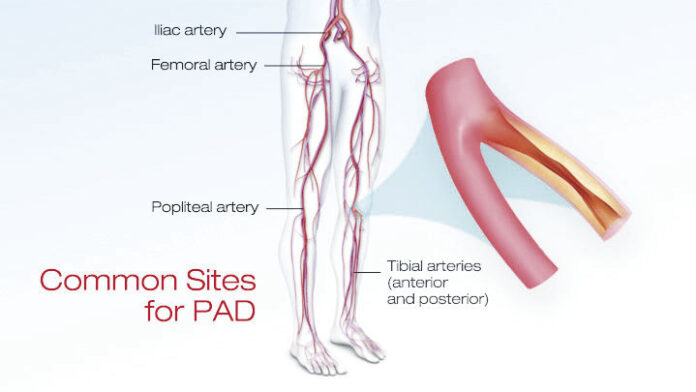HARLINGEN & BROWNSVILLE – Peripheral artery disease (PAD) is a circulatory problem that involves the narrowing of vessels that carry blood away from the heart.
Plaque, a substance made up of fat and cholesterol, builds up on the inside walls of the arteries and restricts normal blood flow.
This buildup of plaque is called atherosclerosis, or hardening of the arteries.
Approximately 8.5 million people in the United States have PAD. Prevalence of the disease increases with age and affects a disproportionate number of African Americans.
Risk factors for developing the condition include smoking, diabetes, age, being overweight and elevated blood pressure and cholesterol levels.
Smoking is more likely than any of the other risk factors to cause PAD.
In fact, a smoker’s risk can be up to 2 to 6 times higher than a nonsmoker and worsens the symptoms.
One of the first signs of PAD can be painful cramping or fatigue in the legs and buttocks that occurs during activity, but stops during rest.
However, approximately half of people with the disease have mild or no symptoms.
The condition also can cause leg numbness or weakness, cold legs or feet, skin color changes in the arms or legs, toe or foot sores that don’t heal quickly, hair loss on legs, and burning or achy feet and toes when resting or lying down.
In advanced stages, blood flow to a leg or foot can be severely blocked, causing tissue death that may result in amputation.
Diagnosing PAD can be done through an ankle-brachial index test which compares blood pressure levels in the ankle and arm.
Arteriogram, a form of imaging that uses a dye injected into the blood vessels, allows the doctor to watch blood flow through the arteries as it happens.
A medical history, physical exam or ultrasound also may be used to diagnose PAD.
People diagnosed with PAD can usually be treated with lifestyle changes, medications or a combination of both.
Lifestyle changes include smoking cessation, diabetes management, blood pressure control, exercise and a healthy diet.
In some cases, however, surgery may be necessary to open vessels using a balloon catheter (a small, hollow tube).
Doctors may bypass the blocked vessel using either a graft or directly inject a clot-dissolving drug into the artery. In some cases, a stent (a mesh tube) is inserted to keep the vessel open.
Leg pain, numbness or other symptoms should not be dismissed as normal aches and pains of aging.
Early diagnosis and treatment of PAD is important to not only protect your health, but also decrease your risk of heart attack or stroke.




